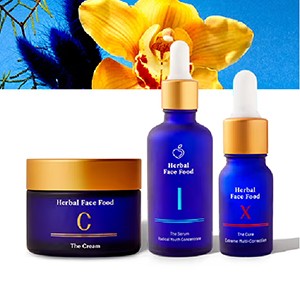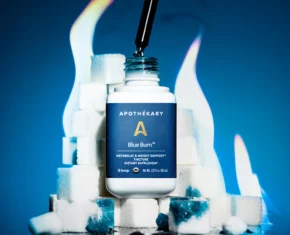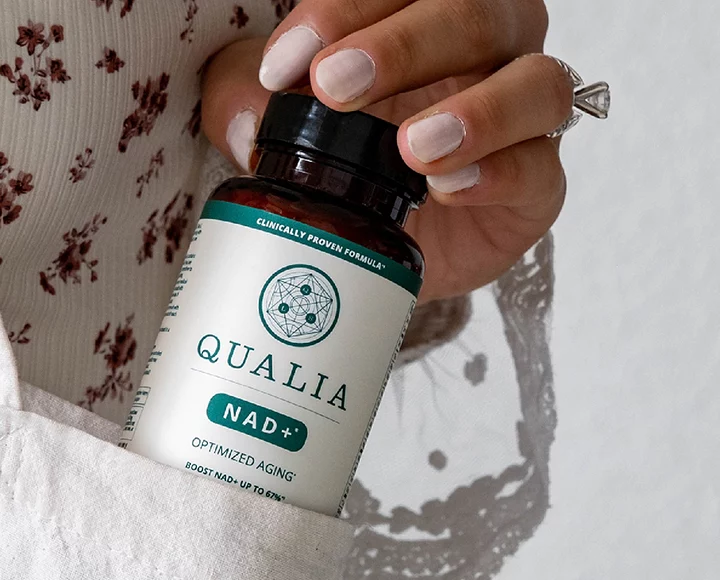Went a little too hard on a case of orange wine? While our bodies are designed to eliminate toxins, a buildup can push our organs into working overtime, leaving us with a sense of uncomfortable imbalance. Aid that natural process and get back to balance with a simple liver detox like this one from functional medicine expert, Dr. Josh Axe…
Every person’s health and well-being depends on how well their body removes and purges toxins. With exposure to environmental toxins, toxic body care products and processed foods, most people are in desperate need of a serious detox! A liver cleanse is a great way to do this.
One of the main ways that the body rids itself of toxins is through the liver. In fact, the liver is one of the hardest working organs in the body. It works tirelessly to detoxify our blood; produce the bile needed to digest fat; break down hormones; and store essential vitamins, minerals and iron. When liver function is not optimal, we cannot digest our food properly, especially fats.
For the liver to take care of the body, it must be able to perform optimally. When many people think of liver disease, they often think of alcohol-induced cirrhosis. Cirrhosis is a serious health condition, but contrary to popular thought, alcoholism is not the only cause. In fact, there are a number of nonalcoholic factors that can lead to cirrhosis of the liver and liver damage: eating uncooked shellfish, some medications (including acetaminophen and Accutane) and chronic malnutrition.
A Simple 6-Step Liver Detox
Remove Toxic Foods from Your Diet.
If you are eating a diet high in processed foods, you are putting the health of your liver at risk as these foods basically work against liver health. Hydrogenated oils, refined sugar, convenience foods and lunch meats are notoriously toxic to your system.
Hydrogenated oils, also known as “trans fats,” have higher levels of saturated fat. The chemical structure of the oil itself has been altered to increase shelf life. Consumption of trans fats dramatically increases the risk for heart disease by 25 percent or more. In addition, it is believed that trans fats cause problems with our immune system and can lead to inflammation throughout the body.
Added nitrates and nitrites, commonly found in convenience foods, fast foods and lunch meats, have been linked to serious health conditions. These chemicals are used to preserve foods to make them last longer, inhibit bacteria growth and preserve color. Replace these foods immediately with liver friendly healthy choices. Healthy foods taste great, and, with a bit of creativity, you can create healthful meals for your family that will support liver health.
Roast your own organic chicken breast and turkey breast to replace deli meats for quick lunches and after school snacks. Replace chips and other processed snacks with fresh fruit, carrot sticks, nuts and homemade granola bars.
In addition to eating a healthy diet, it’s important to be sure your digestive enzymes are functioning properly. Problems with liver enzymes can also contribute to liver disease and may be related to other digestive illnesses such as Crohn’s disease.
Drink Raw Vegetable Juice.
It can be nearly impossible to eat all of the raw vegetables you need to make your liver cleanse effective. However, by juicing a variety of raw vegetables, you can easily get the 4–5 servings of fresh, organic vegetables you need. Even vegetables that aren’t your favorites can be disguised and enjoyed in a fresh vegetable juice.
With impaired liver function, juicing vegetables has the added benefit of making the vegetables easier to digest and more readily available for absorption.
Vegetables ideal for liver cleanses include cabbage, cauliflower, and Brussels sprouts. While that combination may not sound very enjoyable, you can add other vegetables that you enjoy to the mix including carrots, cucumber, beets and greens. All of these vegetables help to reduce acid levels in the body, helping to create a more friendly pH balance. Experiment with your favorite flavor combinations; you can add fresh herbs including parsley, mint and others to make the juices more enjoyable.
Load Up on Potassium-Rich Foods.
Are you getting the recommended 4,700 milligrams per day of potassium? Chances are, you aren’t. Potassium-rich foods help to lower systolic blood pressure, lower cholesterol and support a healthy cardiovascular system, in addition to helping cleanse your liver. If you have been tempted to take potassium supplements, instead add these healthful foods to your diet.
Sweet Potatoes. Surprisingly, it is not the banana that is the richest in potassium. It is the sweet potato. A single medium sweet potato contains nearly 700 milligrams of potassium, not to mention the high fiber and beta carotene content. A sweet potato only has 131 calories, yet is rich with vitamins B6, C, D, magnesium and iron. While naturally sweet, the sugars actually are slowly released into the bloodstream through the liver, without causing a spike in blood sugar.
Tomato Sauces. Potassium, and the other beneficial nutrients in tomatoes, is significantly concentrated as a sauce, puree or as a paste. As an example, 1 cup of tomato puree contains 1,065 milligrams of potassium, but 1 cup of fresh tomatoes contains only 400 milligrams. When selecting tomato sauce, paste or puree, be sure to choose those made only from organic tomatoes.
Beet Greens + Spinach. Rich in antioxidants, beet greens contains over 1,300 milligrams of potassium per cup. Add beets and beet greens to your fresh vegetable juice recipe; finely chop and add raw to salads; or sauté lightly, like other greens. Beets also naturally cleanse the gallbladder and improve bile flow. Fresh organic spinach is easily added to your diet, and it’s a good source of potassium, containing 840 milligrams per serving.
Beans. White beans, kidney beans and lima beans are all rich in potassium, protein and fiber. Swap out garbanzo beans for one of these potassium-rich beans in your favorite hummus recipe. Enjoy it with carrot sticks and celery sticks.
Blackstrap Molasses. Just 2 teaspoons of this rich all-natural syrup contains 10 percent of the daily-recommended amount of potassium. In addition to potassium, blackstrap molasses is rich with iron, calcium, manganese and copper. Incorporate blackstrap molasses into your diet by replacing other natural sweeteners with it. You can use it to create barbecue sauces and to top oatmeal or quinoa porridge in the mornings. Two teaspoons added to coffee intensifies the richness of the coffee, while lowering the acidic taste.
Bananas. And finally, add a banana to your favorite smoothie. While in comparison to the other high potassium foods on this list, the banana’s 470 milligrams of potassium are only part of the story. Bananas assist in digestion, and help to release toxins and heavy metals from the body — all of which are essential during a liver cleanse.
Coffee Enemas.
Coffee enemas help with constipation, reduce fatigue, and aid in liver detoxification.
An enema targets the lower portion of your large intestine and can be done at home, unlike colonics, which include the entire bowel and are performed outside the home by a professional. During the enema, organic coffee is retained in your bowel, allowing the fluid to enter the liver through the intestinal wall. This has a stimulating effect that increases bile flow, helping to jump-start both your gallbladder and your liver. This sparks the production of the chemical glutathione, a strong cleansing compound that helps to release the buildup of toxins in your system.
Flushing the toxins out during liver cleanses is critical so they don’t build up and are moved quickly out of your system. To try it at home, combine 2 tablespoons of organic ground coffee with 3 cups of filtered or distilled water in a pot and bring to a boil. Simmer gently for 15 minutes and allow to cool. Strain the mixture through cheesecloth and use in your enema kit. Try to retain the mixture for 10–15 minutes and then release.
If you’ve experienced complications from using enemas in the past, it’s best to talk to a doctor before trying to perform a coffee enema on your own. The first time you try a coffee enema, it’s a good idea to do so under supervision or with guidance of a medical professional, although some people feel comfortable jumping right into the process. Coffee enemas aren’t usually recommended for pregnant women or children since they can be sensitive to the effects of caffeine.
Take Milk Thistle, Dandelion, and Turmeric Supplements.
Milk Thistle. Milk Thistle is considered the “king” of detoxifying herbs, making it ideal for a liver cleanse. IT helps to eliminate the buildup of heavy metals, prescription medications, environmental pollutants and alcohol in the liver. In addition, it helps to reduce the negative effects on the liver after chemotherapy and radiation. The active ingredient silymarin helps to strengthen the cell walls in the liver, while supporting healthy regeneration. Milk thistle can be taken as a supplement or as a liver cleansing detox tea.
Turmeric. Turmeric reduces joint pain; is an effective antidepressant; aids in digestion; helps to restore a healthy blood sugar balance; and supports healthy liver tissue and liver metabolism. Currently, researchers are studying turmeric for a variety of health benefits for diseases and conditions: Alzheimer’s disease, cancer, depression, osteoarthritis, breast health, prostate health and chronic pain.
Dandelion Root. Most homeowners hate the dandelion, as it populates yards every spring. But, this flower, and its root, is actually packed with vitamins and minerals. Dandelion root has a natural diuretic effect, allowing your liver to more quickly eliminate toxins. It also helps to strengthen the immune system, balance blood sugar levels, relieve heartburn, and soothe digestive upset. It can be consumed daily as a supplement or as a tea.
Burdock Root. THIS is another option in the same plant family as dandelions that can help detox your system by cleansing the blood, therefore helping to support liver function. Burdock root can be taken in both supplement form or as a detox tea.
Eat Real Liver or Take Liver Tablets.
Liver from young, healthy, grass-fed cattle or chicken liver is rich with vitamins A and B, folic acid, choline, iron, copper, zinc, chromium and CoQ10. Liver is one of the most nutrient-dense foods we can eat.
If you can’t stomach eating liver, you can take beef liver pills. Seek a supplement that guarantees no hormones, pesticides or antibiotics are used in the feeding and care of the cattle.
A Quick-Start 24-Hour Liver Detox
In addition to the healthy foods and supplements mentioned above, you can give your liver a boost by starting with a quick, 24-hour liver cleanse. In the seven days prior to this short cleanse, eat kale, cabbage, lettuce, cauliflower, broccoli, Brussels sprouts, citrus fruits, asparagus, beets and celery. Avoid any processed foods, and eat free-range organic meats, refined carbohydrates and gluten sparingly. This preparation will help facilitate the cleanse.
During the week you are preparing your body, try my Secret Detox Drink. It boosts your energy and helps you to detox and cleanse the liver. This recipe calls for apple cider vinegar, lemon juice, cayenne pepper, cinnamon and water.
Then, during the week of your cleanse try this liver detox drink. This recipe will help support your body while cleansing:
Liver Detox Drink
HOW TO:
Dilute cranberry juice with a ratio of 3 parts water to 1 part cranberry juice.
Add 1/4 teaspoon each of nutmeg and ginger and a 1/2 teaspoon of cinnamon into a tea infuser and let steep in simmering water for 20 minutes.
Allow to cool to room temperature.
Add the juice of 3 oranges and 3 lemons and stir. If the mixture is too tart, sweeten with your favorite all-natural sweetener.
Sip throughout the day.
You should consume a minimum of 72 ounces of this mixture and 72 ounces of water. After one day of the cranberry juice blend, reintroduce the foods you ate in preparation for the liver cleanse.
The Chalkboard Mag and its materials are not intended to treat, diagnose, cure or prevent any disease. All material on The Chalkboard Mag is provided for educational purposes only. Always seek the advice of your physician or another qualified healthcare provider for any questions you have regarding a medical condition, and before undertaking any diet, exercise or other health-related programs.












